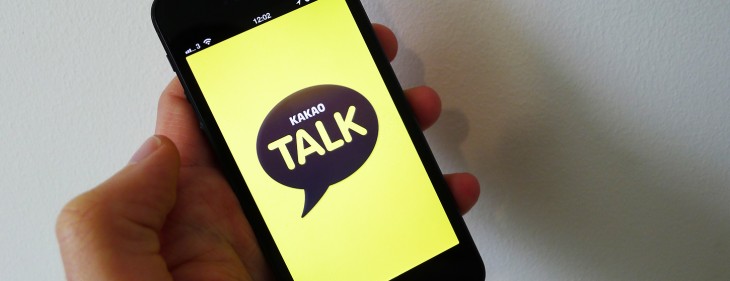
Sirgoo Lee is the Co-CEO of Kakao.
The “unbundling” of mobile applications is emerging as the trend du jour for large tech companies. Google, Facebook and Foursquare have all recently made headlines for dismantling some of their mobile software to create and launch multiple apps.
So what is driving these companies and others to now jump on the unbundling bandwagon? The answer: The feature-packed mega-app no longer meets the expectations of today’s mobile users.
Why a multi-app approach?

To deliver the best app experience, help users accomplish a single mission easily and quickly by avoiding the “one app to rule them all” approach from day one
Cluttering an app with too many features may leave consumers overwhelmed and frustrated, and is often the top reason that users stop using an app altogether.
At Kakao, we learned this lesson early on and have since embarked on a successful multi-app strategy over several years. We started with the flagship KakaoTalk app for messaging and calling, now used by 152 million users globally.
In the development stages, we considered adding a profiles and albums to the app so users could share photos with all their friends. We soon realized that it could make the KakaoTalk experience clunky and confusing. Instead, we created a separate app, KakaoStory, which is now Kakao’s second most popular app, and the number one social network in Korea.
We’ve learned that on mobile, the highest engagement happens with a single purpose app. This stems from the basic difference between user behavior on a desktop vs. on mobile.
Desktop-based applications and websites can pack in more features and functions given the larger screen sizes and more finely-tuned navigation tools, such as trackpads, mouse and keyboards. It is also used over a longer span of time, meaning users are more patient about navigating to reach their goal.
These luxuries are not extended to a mobile user. Smaller screen sizes, limited navigation tools and shortened access time all demand a more purpose driven and straightforward mobile app. Only then, will an on-the-go user will take interest, use it regularly, and keep it on their limited home screens.
Furthermore, a multi-app approach benefits both the users and developers by keeping applications light. If an application is light, it can be updated more quickly to better serve users in the fast-changing mobile landscape with constant OS and device updates. This gives mobile developers the freedom and flexibility to ship frequently and react quickly to feedback.
New feature or new app?

There is one simple question we always ask when we develop a new feature: Is it unique and powerful enough to stand on its own? It’s a question we don’t take lightly.
For example, we’ve introduced features like KakaoGame (our third-party game distribution platform), Item Store and PlusFriend. These features enhance the user experience and provide meaningful ways to interact within the community. We knew that these features wouldn’t overshadow the core messaging and calling experience.
However, sometimes a new feature is best suited as a standalone app. The next app we plan to launch involves mobile payments. We could have simply integrated this within KakaoTalk, but it would have cluttered the experience and added an unnecessary new layer.
While we’re confident that our mobile payment service will have tremendous appeal, we also want to respect our users’ individual preferences and not force this feature on them, since comfort with financial transactions is a very personal decision.
Companies that have embraced a multi-app strategy are seeing benefits of improved user experience. Twitter bought Vine back in late 2012 and kept it as a standalone video app that has attracted a vibrant community of six-second sharers.
RunKeeper, a popular activity-tracking app, just launched an app called Breeze that focuses exclusively on walking. They’re each building strong communities of users committed to specific products.
Do not be afraid to experiment
When you embark on a multi-app strategy, be prepared to experiment and make mistakes.
Each time we launch a new application at Kakao, we’re excited internally about providing another valuable experience for our users. While not every app is going to be a hit, we’ve learned to not be afraid of launching new products.
Every app will connect differently with users, so we pay tremendous attention to our user feedback to be able to quickly improve and refine our app to meet our user needs.
As long as you focus on finding new ways to make users’ lives better through new features and apps, trust those instincts and decisions and see them through. There’s no guarantee all of them will see success, but every one of them will for sure provide valuable lessons that can lead to your next success. Users will excuse a company for launching a new app that doesn’t catch on but they will be quick to abandon their favorite app if it becomes unusable with bloated features.
The key to keeping your mobile users happy: keep it simple.
Read next: Why large tech companies are hopping on the app ‘unbundling’ trend
Get the TNW newsletter
Get the most important tech news in your inbox each week.




